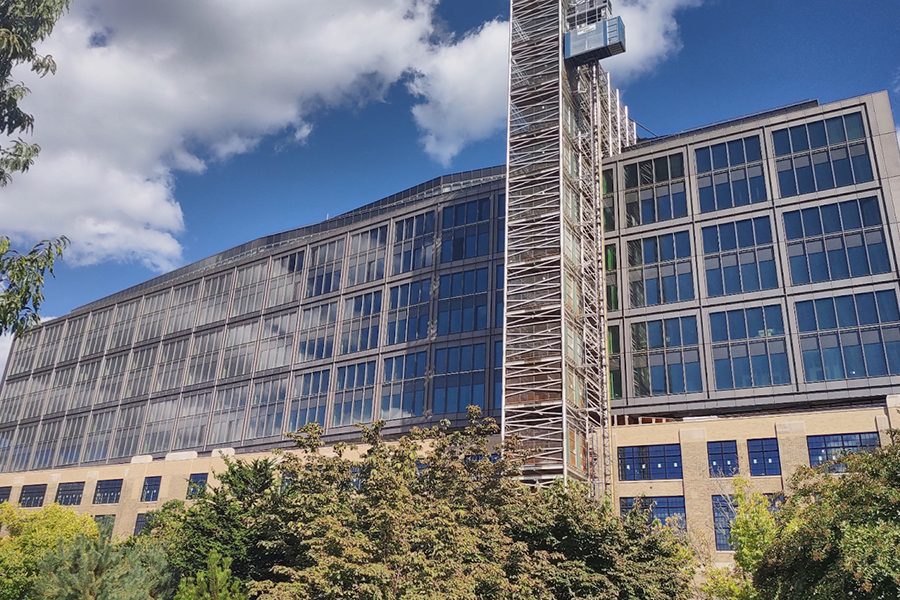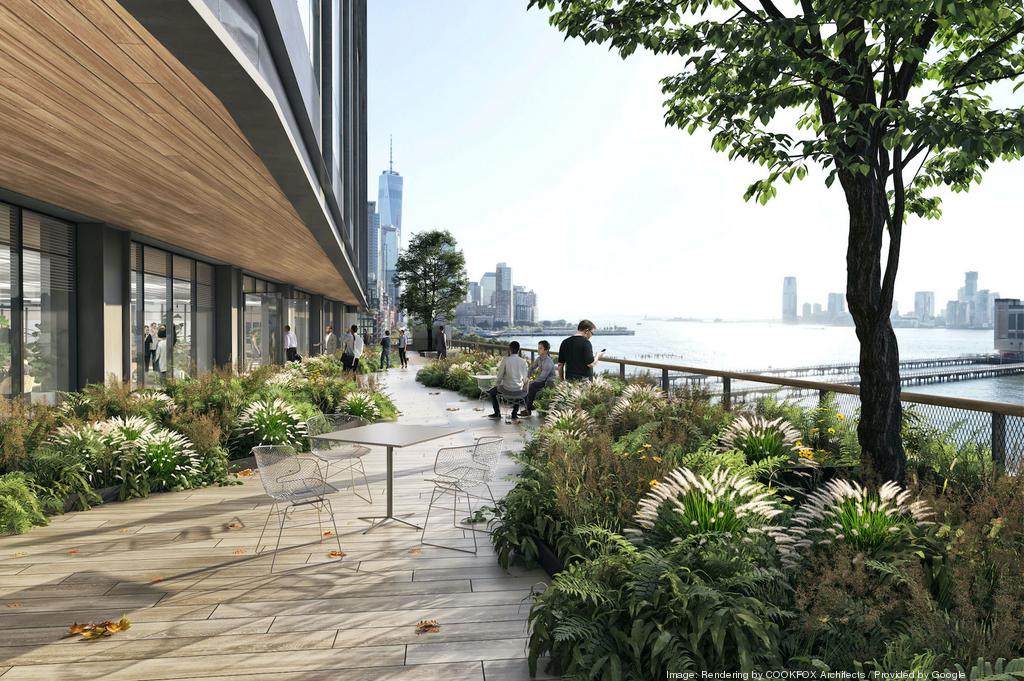Google hit the headlines the second it decided on its hybrid workplace strategy. From cutting remote employees’ pay to delaying its office reopenings, the tech giant has undoubtedly had the world of work’s eyes on its every move since the pandemic began.
We at Hubble are just as fixated. There’s one of Google’s announcement that we find particularly interesting—and that’s its plan to purchase and revamp St. John’s Terminal: an industrial groundscraper right next to its Manhattan HQ in New York City.

And when we say its renovation plans are big, we mean big. The $2.1 billion purchase of the whopping 1.3 million square foot space is the largest single-building commercial real estate deal since COVID hit, and perhaps, one of the biggest of all time.
So, what is Google planning to do with its Manhattan renovation? What inspiration could other hybrid companies draw from it? And why should we even care in the first place? In this blog, the world’s first hybrid workplace platform reveals all. Let’s go!

First thing’s first…why should we care about Google’s office design choices?
What springs to mind when you think of ‘modern office design’? Open plan layouts? Squashy beanbags? Or maybe it’s the variety of breakout areas brandished with vibrant colours and wall art? Whatever you think of, you’ll most likely have Google to thank.
Google has totally transformed our relationship with the company HQ. Soon after it designed the first “GooglePlex” in the early 2000s, the tech giant became a pioneer in designing office space that sparked creativity, boosted productivity and made their employees proud to work there.
Google took dull spaces, characterised by grey carpets and rows of cubicles, and transformed them into dynamic environments with people-centred features like nap pods, free food and even slides.

It wasn’t long before Google became a trendsetter and many workspace providers followed suit— including those listed with Hubble!
It’s no secret that we’re big fans of cool and quirky office spaces. So it’s only natural that our ears pricked up when we heard about Google’s plans to transform a colossal industrial space into a biophilic haven that satisfies the human need to connect with nature.
What we know about Google’s new Manhattan office
The St. John’s Terminal building is currently being renovated by CookFox, an architectural firm described on its own website as ‘dedicated to integrated, environmentally responsive architecture’.
To that end, the office will be complete with several acres of natural gardens, including a fourth-floor terrace running the length of several city blocks.

CookFox has even gone so far as to consult with Eric Sanderson, director of the Mannahatta Project, which aims to document Manhattan’s landscape before the arrival of European settlers in the 17th century. Together, they’ll work to include flora that would have naturally existed in the area almost 400 years ago.
Contrary to NYC real estate tradition, Google’s new office building won’t make its mark on the city skyline. Instead, the 1.3 million square feet of office space will be spread over just twelve stories (though it does cover several city blocks and include around 600 feet of Hudson River frontage).

Architects are calling this type of building, which is built outwards instead of upwards, a ‘groundscraper’—and there are several reasons behind the idea. For one, it will make it easy for Google to rearrange its office space to accommodate changing teams. More importantly, it does away with some of the elements of the traditional corporate hierarchy and gives the workspace a more communal feel.
Biophilia in the Millennial & Gen Z workplace
Google is not alone in its focus on biophilic design. Offices filled with plants, views of nature, and outdoor space are popping up all over the world.
Amazon has unveiled plans for a group of four buildings in Arlington, Virginia, that will boast a dog-walking park and a series of rainwater-fed gardens filled with native trees and fauna. In London, a new development scheduled for completion in 2026 will include 400,000 square foot of office space, plus a 30,000 square foot green space complete with an urban farm and a 200-metre-long ‘walk-and-talk’ track.
In fact, some of the most popular spaces on Hubble On-Demand are decidedly biophilic, from LABS’ lush, plant-filled Camden Atrium, to any Uncommon or Second Home location, all of which feature plenty of flora, outdoor spaces, and even trees.

But why this obsession with green spaces and plants in the workplace? Simply put, people want it: a study by property investment firm, JLL, found that 41% of workers put outdoor spaces in their top three expectations for a wellbeing-oriented office. The same study found that only 25% of respondents currently had access to an outdoor space at work—so it’s no surprise that the major players are using their financial resources to try to win talent by giving the people what they want.
And biophilic spaces seem to go down particularly well with Millennial and Gen Z employees. These younger generations perhaps care more about the environment than their Gen X and Baby Boomer parents, for a start. They’re also more likely to prioritise things other than salary when looking for a job—like having an ethical employer who cares about their well-being.
Reinventing the office for the new world of work
While not every company has the capital for a massive Manhattan property investment, we can all take note of what Google is trying to achieve with the St John’s Terminal project.
With many companies—including Google—saying they’ll operate hybrid work policies for the foreseeable future, the office is no longer a necessary evil we have to put up with every day.
Instead, it should be a pleasant place where we can come together for interaction, collaboration and idea-sharing—and if that includes a plant-filled terrace with views over the Hudson, those three days in the office are bound to feel like less of a chore.
Get access to hundreds of workspaces on-demand with Hubble
Google’s hybrid policy means the majority of its employees will spend part of their time working from the office, and part of it working somewhere else. That could be from home, from a coffee shop, or even from a coworking space.
With Hubble On-Demand, you can give your team access to innovative and inspiring spaces in 1000+ locations worldwide—including NYC. Interested? Click the link below to find out more!
